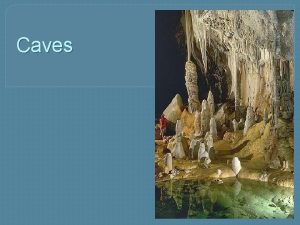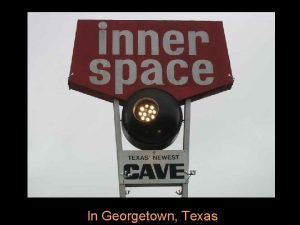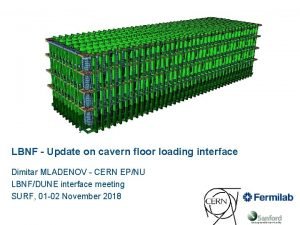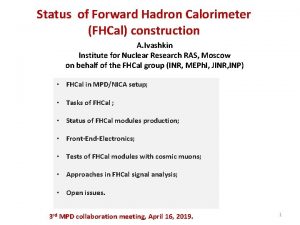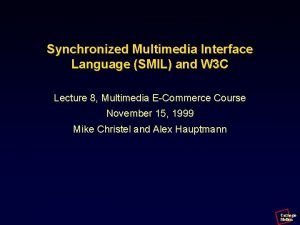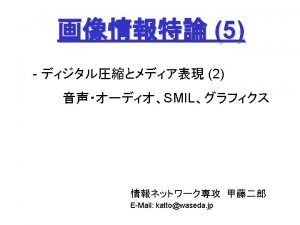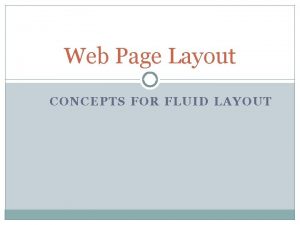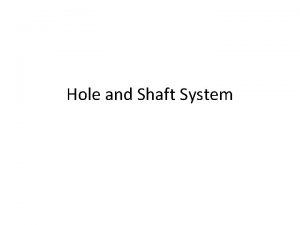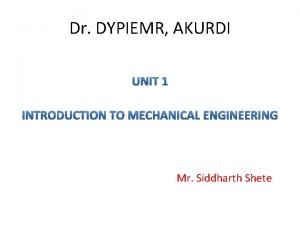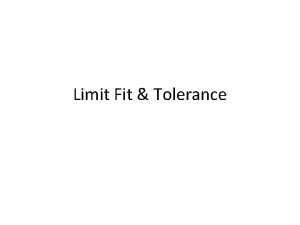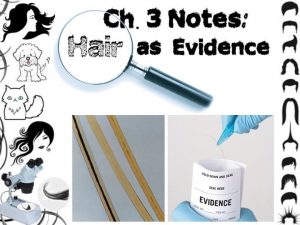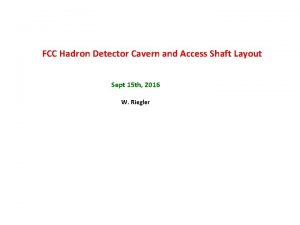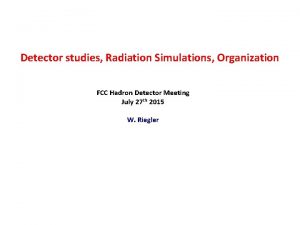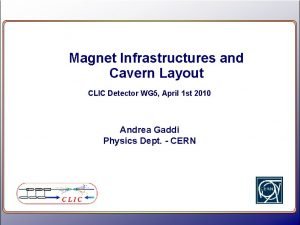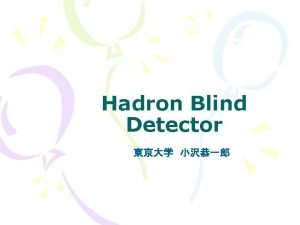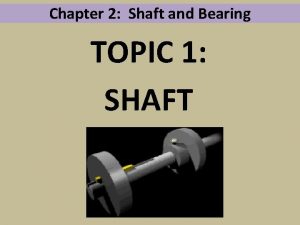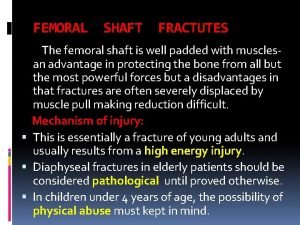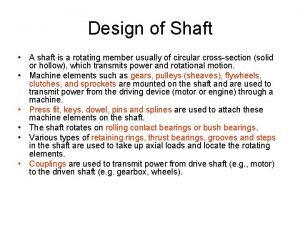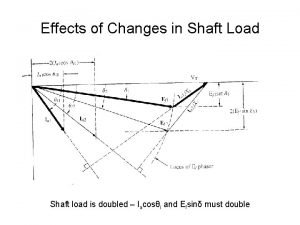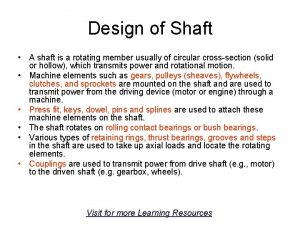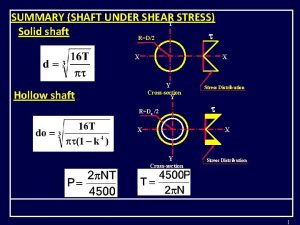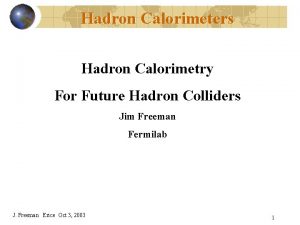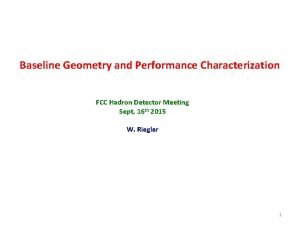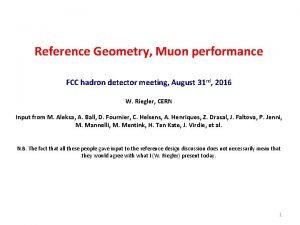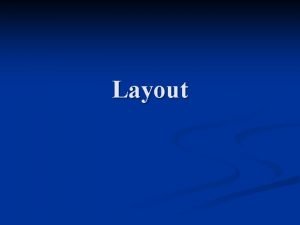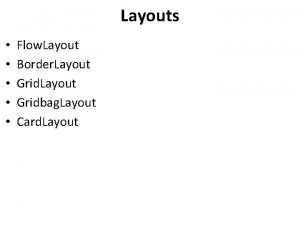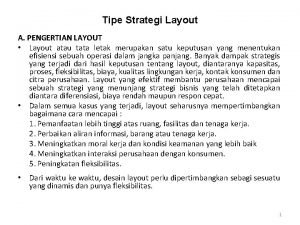FCC Hadron Detector Cavern and Access Shaft Layout



















- Slides: 19

FCC Hadron Detector Cavern and Access Shaft Layout Sept 15 th, 2016 W. Riegler

ATLAS Cavern 12. 6 m diameter 18 m diameter 35 m 30 m 50 m

Cavern

ATLAS, CMS size CMS enveloping radius 7. 5 m Length 30 m ATLAS enveloping radius 12 m Length 44 m

FCC Reference Design, ATLAS FCC Reference enveloping radius 10 m Length 50 m ATLAS enveloping radius 12 m Length 44 m Shaft similar to ATLAS with a transverse span of 30 m and height of 35 m fits the baseline.

Reference geometry 4 T central Field, no return yoke or shielding solenoid η=0. 5 η=1. 5 η=2. 5 η=3. 5 η=4

Reference geometry in a cavern of 30 x 70 m

Sideway opening Possibility to install the central calorimetry and the tracker.

Forward opening to access all detectors for maintenance.

Cavern Length TAS Q 1 TAS 70 m 80 m 90 m L*=45 m TAS + Infrastructure = 5 m TAS Shielding in Tunnel = 5 m Distance between Q 1&Q 1 = 90 m Distance between TAS & TAS = 80 m Cavern Length = 70 m Cavern length of 70 m is compatible with the opening scenario of the present detector.

Service Cavern

50 m CMS 27 m 21 m 84 m 18 m FCC detector will need a similar service cavern size. A service cavern of 20 mx 100 m should be used for the reference design. It must be accessible during FCC operation.

Shaft

Superconducting Solenoids

Main Shaft Diameter of 15 m is compatible with the main solenoid. For maintenance reasons a second shaft that also fits the forward solenoid is mandatory. Second Shaft Diameter of 10 m is compatible with the forward solenoid.

Crane Capacity shaft diameter 15 m HCAL: HCAL Support: L=9. 3 m, HCALmix, L=9. 3 m, Iron, rho=6. 6 g/cm 3 Total ECAL Cryostat cylinder 1: ECAL Larg: ECAL Cryostat Cylinder 2: Total L=10 m, Al L=10 m, ECALmix, rho=4. 08 g/cm 3 L=10 m, LArg L=10 m, Al 2597 t 437 t ==== 3034 t 31 t 343 t 29 t 68 t ==== 471 t Solenoid: 2150 t A crane capacity of 3 kt should be studied.

Conclusion Cavern: Main Shaft: Second Shaft: Service Cavern: Crane Capacity: L=70 m, W=30 m, H=35 m D=10 m L=100 m, W=20 m, H=15 m 3 kt

Length of the forward solenoid From Matthias The total stored energy (a rough proxy of cost) increases from 13. 8 to 14. 1 GJ. The net axial force increases from 60 to 100 MN. The weight of the cold mass of each forward solenoid increases from about 50 tons to about 75 tons. The required cooling power scales proportional to the length of the forward solenoid, thus implying a 60% increase in cooling cost for each forward solenoid.

Stray Field Calculations Up to now the stray field has been calculated assuming the coil ‘sitting in vacuum’. Since our baseline cavern layout matches the one of ATLAS we look at the stray field with the cavern walls and included iron as boundary condition to see the stray field, specifically along the beamline.
 Cavesa
Cavesa Inner space cavern map
Inner space cavern map Cavern floor
Cavern floor Hadron calorimeter
Hadron calorimeter Hadron collider
Hadron collider Hadron collider
Hadron collider Lhc tantalizing new physics
Lhc tantalizing new physics Hadron
Hadron Denominator layout
Denominator layout Language
Language Mpeg-1
Mpeg-1 Fluid layout vs fixed layout
Fluid layout vs fixed layout Terminal access controller access control system
Terminal access controller access control system Terminal access controller access-control system
Terminal access controller access-control system Fcc office of engineering and technology
Fcc office of engineering and technology Bcc 110 planar density
Bcc 110 planar density Transition fit diagram
Transition fit diagram Difference between shaft and axle
Difference between shaft and axle Mml of hole and shaft
Mml of hole and shaft Largest part of the hair shaft in humans
Largest part of the hair shaft in humans
